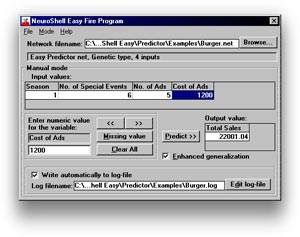

Giving a grand total of 936 convolutional parameters and 2,095 in the fully connected layers. The final two fully connected layers had 15 and 10 neurons respectively. Layer 2 condensed these to 8h x 8w x 8c and then 4h x 4w x 8c after max pooling.
#Neural network using excel solver full
By way of a full description, there are two convolutional layers with max pooling taking the images of the handwritten digits from 28h x 28w pixels to 24h x 24w x 4c (4 channels) and 12h x 12w x 4c after max pooling. The model has very few layers, neurons and parameters, its tiny in comparison to real-world examples. After several silly but informative mistakes, I completed the model below last night and would welcome your thoughts. However, this blog relates to last week’s modelling of a convolutional neural net again with ADAM optimisation and Batch capability. My initial attempts at classifiers using plain vanilla fully connected neural networks are on my YouTube channel below but Mike Pallister was faster off the mark than me and is also worth a look. Yann has made this data available to all and there are plenty of higher level language examples. This relates to Yann LeCun’s data set of 60,000 handwritten digits (0 to 9) with an associated 10,000-digit test set. The classic beginners exercise for deep learning is to build an MNIST digit classifier. My intuitions are still weak but certainly improving. For a deeper understanding of Neural Nets go to Andrew Ng.

I would also argue that the speed of Excel gives you time to think as the failures manifest themselves. Figuring out the failure based on the learning behaviour really forced me to think about the maths and the structure. Neural networks are very robust to bugs, in fact, they often continue to learn but fail in odd and interesting ways.
#Neural network using excel solver code
Excel gives a less abstract view of a neural net than vectorised Python code and it helped me immensely in developing an understanding of these fantastic new tools.Įxcel lets you see inside the machine but for me, an even more useful element was the bugs and miss wiring that I introduced. I certainly hope this state won’t last long.īuilding in Excel may be slow, but it makes neural nets very transparent, in that you are visually confronted with the layers, neurons and their associated parameters and related calculations. However, I know Excel and find it easier to construct these on a spreadsheet rather than in a new language. Excel is not “yet” the right medium to build convolutional neural nets for real-world applications.

Throughout the course, I’ve been building out the neural net architectures he describes in Excel. I’m currently working through Andrew Ng’s brilliant Deep Learning course on Coursera and I’ve reached Course 4, Week 3. I have been deeply involved with financial analysis and mathematical models for most of my career but began re-tooling with machine learning over the last two years. I’m unaware of anyone else who has done this in Excel so please let me know if you come across others. This required a convolutional neural network – the engine behind just about all machine learning related to images. This blog relates to work I’ve done in Excel to build a handwritten digit classifier basically, a spreadsheet that can read handwriting up to human levels of accuracy.

Building Convolutional Neural Networks in Excel


 0 kommentar(er)
0 kommentar(er)
